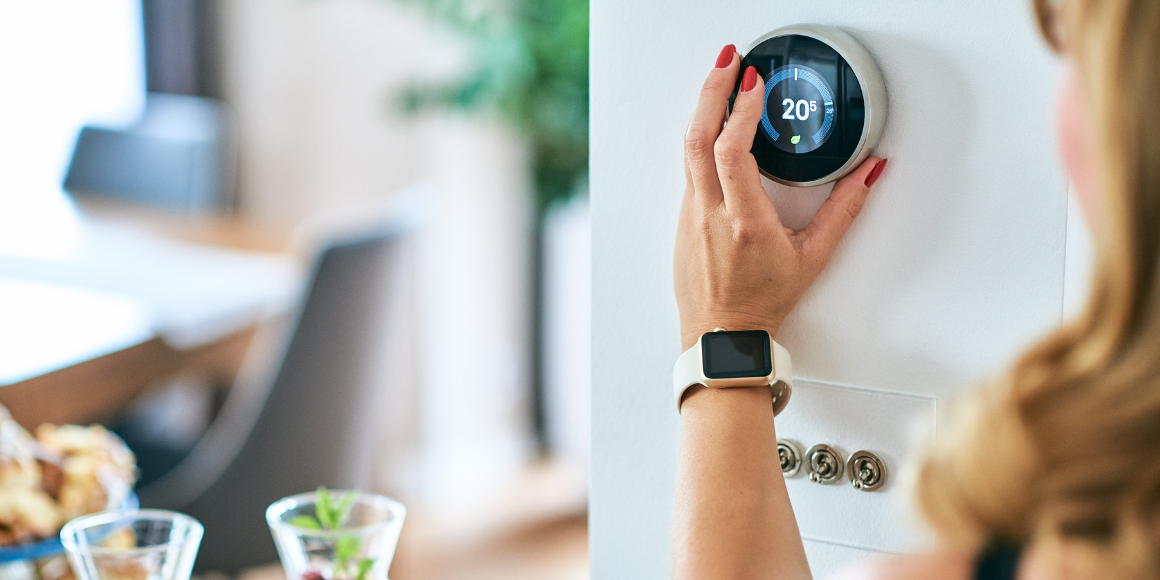- Beth Ann Tabak
8 Ways to Save on Home Energy Costs

Winter weather has a way of sneaking up with its snow, ice and chilling winds. However unwelcome it might be, it does serve as a helpful reminder to check in on your home energy usage. Considering that the average American family spends more than $2,000 each year on utilities – with a good portion of that cost wasted energy – an energy audit can help you confirm that you’re getting the most bang for your buck.
Here are a few easy ways that you can make a difference in your energy costs.
Check your insulation
Depending on the time of year and where you live – hello, Northeast Ohio – heating or cooling your home can be the largest energy expense you encounter. Surprisingly, most American homes don’t have enough insulation to properly prevent air leaks, which can be a major drain on your heating and cooling system and your wallet. According to the Department of Energy (DOE), homeowners can save approximately $200 annually by adding insulation to drafty walls and roofs. Plus, your home will be more comfortable. Energy.gov offers tips to easily evaluate your home insulation.
Plug the leaks
There’s nothing quite as jarring as a draft of cold air on a winter morning through a leaky window or door. The easiest way to combat this is making sure that you have energy-efficient, double-pane windows, or storm windows or doors installed. If you’re considering making such an update, consider a Home Improvement Loan from 7 17. It’s a great way to help you make some cold-weather updates around your house, especially if you don’t have enough equity in your home to use a Home Equity loan.
If you’re not looking to go that route right now, plastic sheeting kits that seal out the cold air are a quick, affordable fix. Weather stripping and caulking can also plug cracks and holes in window and door frames; not only does it keep the cold air out (or in, depending on the season), but dust, rodents and pests, too. Finally, insulated or light-blocking curtains can be a last stand against the summer sun or frigid winter air.
Timed Thermostat
A programmable thermostat can save you up to $180 in home energy costs each year. Using the pre-programmed energy settings, you can adjust the temperature to change when you’re at work, asleep, or away from home for an extended period of time. Keep in mind that the thermostat’s location plays a role in temperature regulation, so try to keep hot lamps away from it or block windows that might cause direct sunlight to shine on it.
Power Strips
Did you know that even when turned off, some appliances can still sap energy if left plugged in? This state, known as standby mode, can cost you an extra $100 each year. Since you probably don’t want to take the time to walk around to your television, computer, sound system and more to unplug them individually, a power strip can do the trick. You can leave the appliances plugged in and disconnect the power with the flip of one switch.
Light bulbs
Save energy on your lighting by opting for CFL (Compact Fluorescent Lamp) or LED (Light Emitting Diodes) lights. The up-front purchase price is more than traditional incandescent bulbs, but they payoff in longevity and annual savings.
Watering plants
During the summer months, it’s recommended to water your plants in the early morning hours and the evening. Why? Science! When the air is hotter, water evaporates into the air more quickly, which means that less is going from your hose to your shrubbery. And, if you’re really looking to conserve your use, collect water from the summer rainstorms and use that to water your plants instead.
Leaky faucets
Hate the drip-drip-drip of a leaky faucet? You’ll hate your water bill even more if you let those go without a fix. According to the Department of Energy, a water faucet that drips can cost you in the neighborhood of $35 a year.
Showerheads
Installing a quality, low-flow shower head can result in a savings of between 25 and 60 percent of your water spending. Again, there is a slight up-front cost, but it will pay for itself in just a few months. Also, remember your parents’ advice and take shorter showers – it’s the easiest way to not only conserve water but you’ll use less energy to heat the water.
These are just a handful of the measures you can take to save on energy costs throughout the year. For a more in-depth look at Save Energy, Save Money, please visit: www.717cu.com/KOFE. Once you proceed to the KOFE site, select financial publications from the KOFE table drop-down menu. 7 17 has partnered with KOFE (Knowledge of Financial Education) to provide free financial education tools to help support members’ long-term financial health. Resources include publications, videos and more. Plus, you have free access to financial coaches, seven days a week!